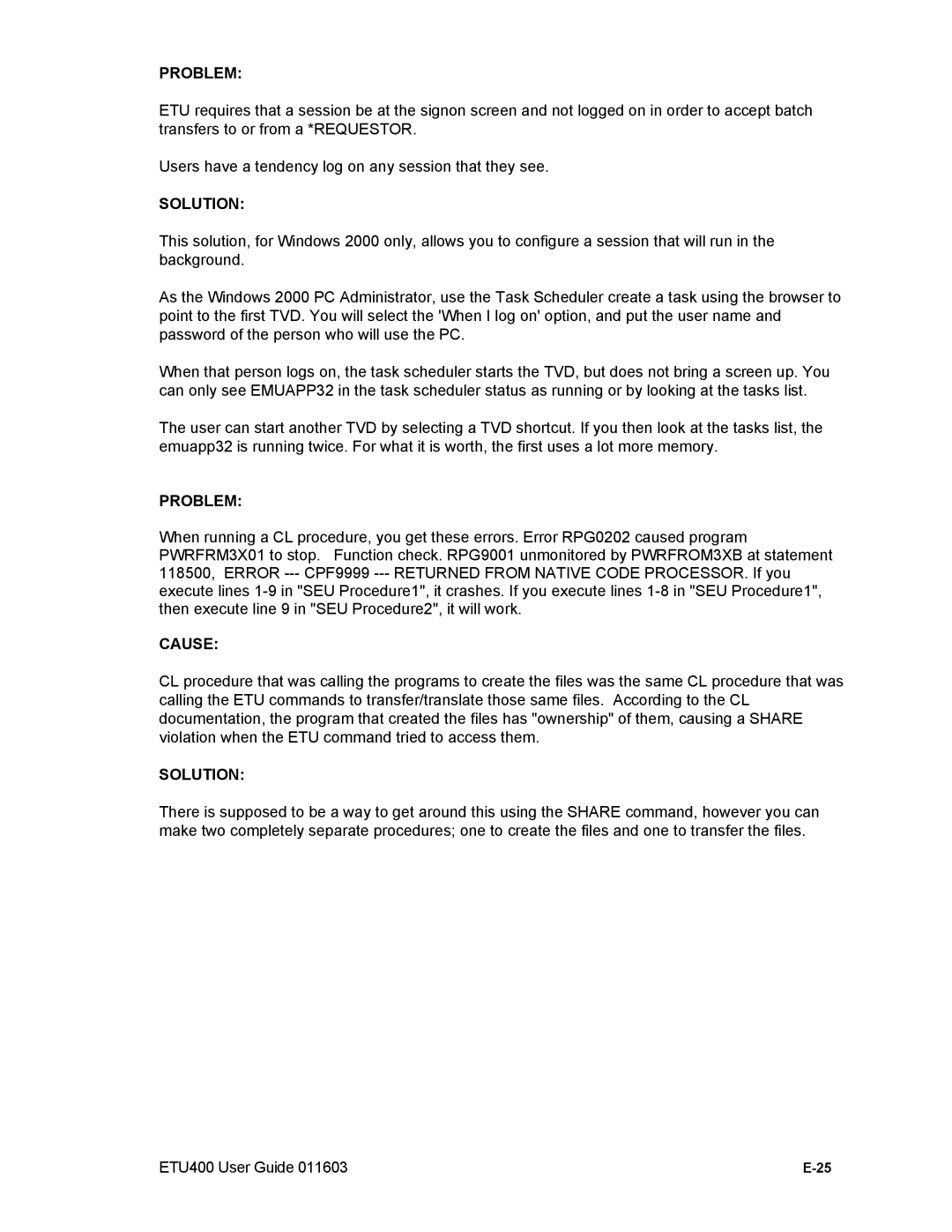PROBLEM:
ETU requires that a session be at the signon screen and not logged on in order to accept batch transfers to or from a *REQUESTOR.
Users have a tendency log on any session that they see.
SOLUTION:
This solution, for Windows 2000 only, allows you to configure a session that will run in the background.
As the Windows 2000 PC Administrator, use the Task Scheduler create a task using the browser to point to the first TVD. You will select the 'When I log on' option, and put the user name and password of the person who will use the PC.
When that person logs on, the task scheduler starts the TVD, but does not bring a screen up. You can only see EMUAPP32 in the task scheduler status as running or by looking at the tasks list.
The user can start another TVD by selecting a TVD shortcut. If you then look at the tasks list, the emuapp32 is running twice. For what it is worth, the first uses a lot more memory.
PROBLEM:
When running a CL procedure, you get these errors. Error RPG0202 caused program PWRFRM3X01 to stop. Function check. RPG9001 unmonitored by PWRFROM3XB at statement 118500, ERROR
CAUSE:
CL procedure that was calling the programs to create the files was the same CL procedure that was calling the ETU commands to transfer/translate those same files. According to the CL documentation, the program that created the files has "ownership" of them, causing a SHARE violation when the ETU command tried to access them.
SOLUTION:
There is supposed to be a way to get around this using the SHARE command, however you can make two completely separate procedures; one to create the files and one to transfer the files.
ETU400 User Guide 011603 |
